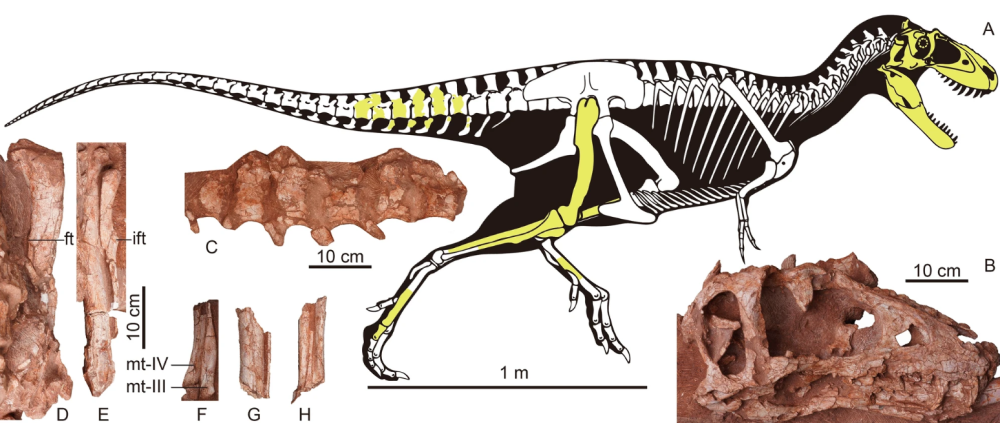A new tyrannosaur has been identified from China, dating back 66 to 72 million years. It was retrieved from the Nanxiong Formation of Nankang District, Ganzhou City, and has a lot to say about the evolution of tyrannosaurs.
Among the tyrannosaurids, the group of dinosaurs that includes Tyrannosaurus rex, we observe two key body types: long slender snouts, and deep stubby snouts. It’s one of the latter varieties that was recently identified in southeastern China, and it’s exciting news for tyrannosaur fans.
As a new-to-science species, it’s been named Asiatyrannus xui as a nod to the new “tyrant” dinosaur hailing from Asia, and Dr Xing Xu of the Institute of Vertebrate Paleontology and Paleoanthropology at the Chinese Academy of Sciences.
The deep-snouted tyrannosaurid wasn’t fully grown, but it had gone through its fastest growth phase – a growth spurt that’s long been recognized among tyrannosaurs. It’s estimated to have been a small to medium-sized dinosaur in life, measuring around 3.5 to 4 meters (11.5 to 13.1 feet) long, which is roughly half the size of the long-snouted Qianzhousaurus Tyrannosaurs that also lived in the region.

The fossil remains of Asiatyrannus xui.
That Asiatyrannus and Qianzhousaurus were neighbors during the Late Cretaceous period could suggest that their differing snout morphologies reflect the different ecological niches they occupied. In the same way that the various beak morphologies inspired Darwin’s thoughts on evolution, it could be that stubby vs. slender snouts reflect different dietary preferences and ways of getting their dinosaur business done.
“Asiatyrannus is the first definitive deep-snout tyrannosaurid dinosaur from southern China and is the southernmost occurrence of tyrannosaurids in Asia,” wrote the study authors, who say that it “currently represents the only definitive small to medium-bodied tyrannosaurine.”
“Asiatyrannus is part of the diversification of deep-snouted tyrannosaurids and emphasizes the higher species richness of theropods, especially tyrannosaurids, in southeastern China,” the authors continue.
“The discovery reveals the coexistence of the long-snouted and deep-snouted tyrannosaurid in southeastern China as in the Late Cretaceous of central Asia[…] Qianzhousaurus undoubtedly occupied the apex predator, but Asiatyrannus might represent the small to medium-sized theropod niche between the large-bodied Qianzhousaurus and the diversified small-bodied oviraptorosaurs.”
Those oviraptors have quite the reputation as small predators, but were they really the “egg thieves” their names would have us believe?
The study is published in the journal Scientific Reports.
Source Link: New Species Of 69-Million-Year-Old Tyrannosaur Identified In Awesome Fossils